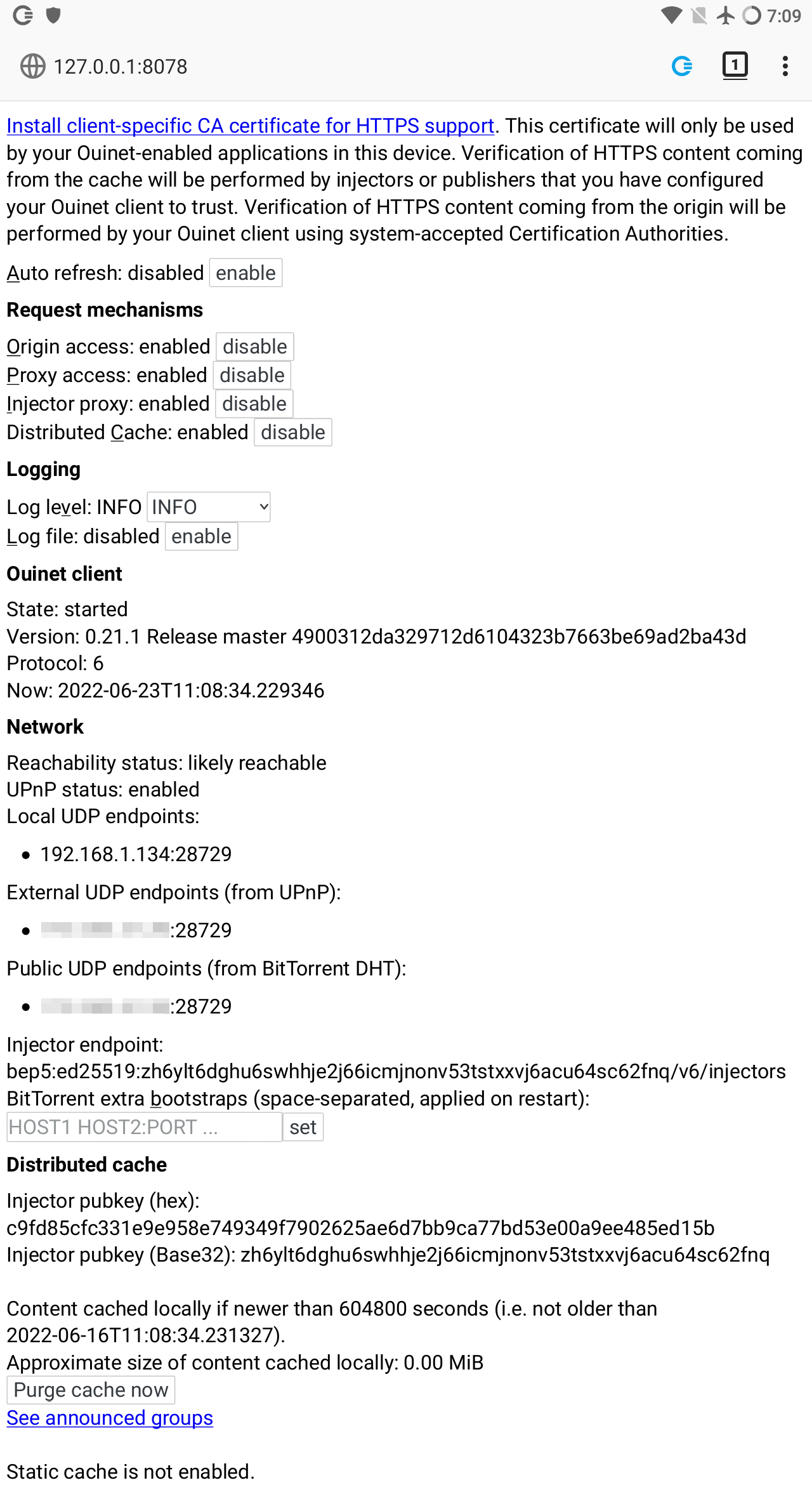Anexo: El front-end del cliente Ouinet
The Ouinet client (as run by e.g. Ceno Browser) offers a front-end page with some information and actions which may be useful for debugging the client. Many of them are also offered by the Ceno Extension via the Ceno Settings page, though others are only available here.
The front-end is accessible using any plain Web browser running on the same device (you can use Ceno too). Its default address is http://127.0.0.1:8078/. If you open it, you will see something like the figure below.

Los ítems mostrados en la página incluyen:
-
Un vínculo para habilitar al cliente como autoridad certificadora (CA) en tu navegador, ya que el cliente necesita interceptar tráfico HTTPS.
You only need this to use a plain browser for testing the Ouinet client, in which case you will also have to configure its HTTP/HTTPS proxies to
127.0.0.1:8077, and manually enable the Ceno Extension for injection to work. We very strongly recommend using a separate, specific browser profile for this purpose.Por favor ten en cuenta que nada de esto necesita ser hecho para el Ceno Browser, ya que ya está configurado así.
-
Botones para habilitar o deshabilitar los diferentes mecanismos usados por el cliente para acceder al contenido.
-
Selectores para elegir diferentes niveles de registro, como el predeterminado
INFO(mensajes informativos, advertencias y errores) oDEBUG(salida detallada útil para informar errores). El archivo de registro también puede ser habilitado y descargado desde aquí.Al habilitar el archivo de registro, el nivel de registro automáticamente se establece a
DEBUG(aunque también puedes cambiarlo de nuevo desde aquí). Al deshabilitar el archivo de registro, el nivel de registro original es restablecido. -
Estado global del cliente e información de versión. Útil al reportar errores.
-
Information about client connectivity and injector addressing. The default
bep5method looks up Internet addresses in a BitTorrent injector swarm, as explained here. -
La clave pública usada para verificar firmas de inyectores en la caché distribuida.
-
Información en tu caché local como la antigüedad máxima del contenido, el tamaño aproximado de la caché, un botón para purgarla completamente, y un vínculo a la lista de entradas de caché anunciadas.
-
El directorio de la caché estática externa, si está habilitada (Ceno no usa esto en la actualidad).